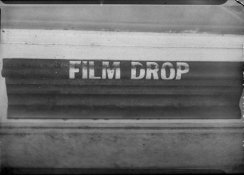michaelbsc
Member
One of my auction treasures included an old Watson bulk loader with some unidentified Kodak film.
I pulled out a couple of feet and developed it to see what is on the rebate. The bottom has frame numbers and the top says Kodak Safet Film over and over. But there is no emulsion identifier.
The substrate is gray like tri x. The Watson condition makes me think it is pretty old but doesn't appear fogged.
What Kodak film would not have been identified? Do I just need to pull out some more to find the number?
I pulled out a couple of feet and developed it to see what is on the rebate. The bottom has frame numbers and the top says Kodak Safet Film over and over. But there is no emulsion identifier.
The substrate is gray like tri x. The Watson condition makes me think it is pretty old but doesn't appear fogged.
What Kodak film would not have been identified? Do I just need to pull out some more to find the number?











